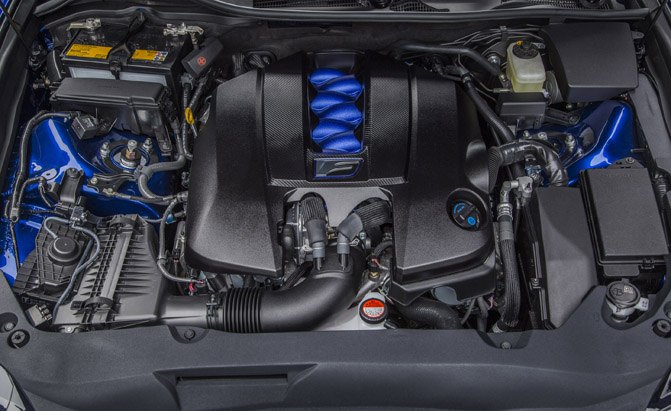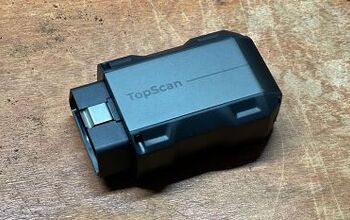6 Things You Need to Get (Or Keep) Your Car Running Smoothly
Today’s cars are much less maintenance intensive, but there are still bits and pieces that, when faulty, can keep your car from running its best. And when it’s running its best, it’s not only delivering the most horsepower, but also the best fuel economy (depending on how you use the go-pedal). Here are six parts you might want to replace to get your car running smoothly again.
Engine Air Filter
Engines work by mixing air and gasoline together for combustion. Air comes in through a filter (sometimes known as an air cleaner), and when that filter gets clogged with dirt — as it inevitably will — your engine is, literally, unable to breathe. Air filters are inexpensive and usually very easy to change; it’s a two-minute job in most cars. Paper air filters are the most common and the cheapest, but a reusable air cleaner (which can be cleaned) reduces landfill waste and can provide better airflow.
Spark Plugs
Spark plugs are charged with the job of igniting the fuel and air. At highway speeds, most spark plugs will be doing this job around 15 times per second, and while modern ignition systems help plugs live longer, they will still eventually wear out. Changing plugs requires an insulated socket (included with most socket sets) and a careful hand so as not to strip the threads, but it’s an easy and inexpensive job, and the appearance of the plugs can give a good indication as to the health of your engine. Make sure you get plugs that fit your engine.
Spark Plug Wires
In order to do their job, spark plugs need a good jolt of electricity, which is delivered by the plug wires. But these wires live in miserable conditions, asked as they are to wind around hot and vibrating engine components. Sooner or later, those wires will wear out: Their insulation will crack or their conductors will come loose, and they will be unable to deliver adequate power to the plugs. A new set of wires restores the flow of juice, and they can usually be installed without tools. As with most parts, the wires are specific to your car, so include your year, make and model when searching.
Distributor Cap and Rotor
The distributor is a mechanical device driven by engine rotation that literally distributes the high-voltage jolt to each of the spark plug wires, firing the plug. Inside the distributor, a rotor spins around and carries the juice, while the distributor cap holds the terminals that lead to the wires. Needless to say, all that spinning and distributing causes them to wear out. Not all cars use distributors—some have a distributorless ignition system that uses coil packs or coil-over-plug ignition coils—but those that do will need the cap and rotor replaced periodically, usually when you change the plug wires. If your car uses ignition coils, these will also fail over time and require replacing (given the higher cost, there’s some debate about swapping them as they fail versus replacing all in one go).
PCV Valve
PCV stands for positive crankcase ventilation. Engines are filled with oil, and they tend to churn up a mist of oil. Time was when this oil mist was vented to the atmosphere, but modern cars have a valve that sucks up this oil mist and burns it in the engine, reducing pollution. When the PCV valve gets clogged, it can affect the car’s ability to run smoothly. This is an easy check: Find your PCV valve, remove it and shake it up and down (along the line of the valve body). If it rattles, it’s good. If it doesn’t, replace it.
Cabin Air Filter
Technically, the cabin filter won’t help your car run better, but it will help you breathe easier. Most modern cars have an air filter for the air conditioning system, and when it’s clogged, it restricts airflow to the whole system (and makes the blower work harder). Most cars have their cabin filters located in a fairly easy to access spot in the dash or behind the glovebox. Change it when you change your engine air filter and both you and your car can breathe easy.
The Wise Guide team writes about things we think you’ll like, introducing you to great products, services and special deals. We do have affiliate partnerships, so we may earn revenue from the products and services you buy.
More by The Wise Guide






































Comments
Join the conversation
Ah, sparkplugs are not easy to change. Most modern Asian engines have a hemispherical combustion chamber and therefore a long tube through the valve cover at the bottom of which resides the sparkplugs; that 'insulated' socket is actually a spark plug socket with a piece of foam tubing to hold the plug once it is unscrewed. The foam actually will hold the plug so tight that the extension will pull out of the socket after you install the new plug so I have two sockets, one with the foam and one without, I use a length of fuel line stuck on the plug to start it and finish it with the plain socket. All this is predicated on your being able to get the individual ignition coil removed from each of the sparkplugs without damaging them or the wiring. Cars with a distributor or a coil pack or a non-hemi could be easier. Good luck.
When was the last time a new vehicle was produced with a distributor and rotor. Might as well tell people to not forget carb cleaner for their fuel injected engine